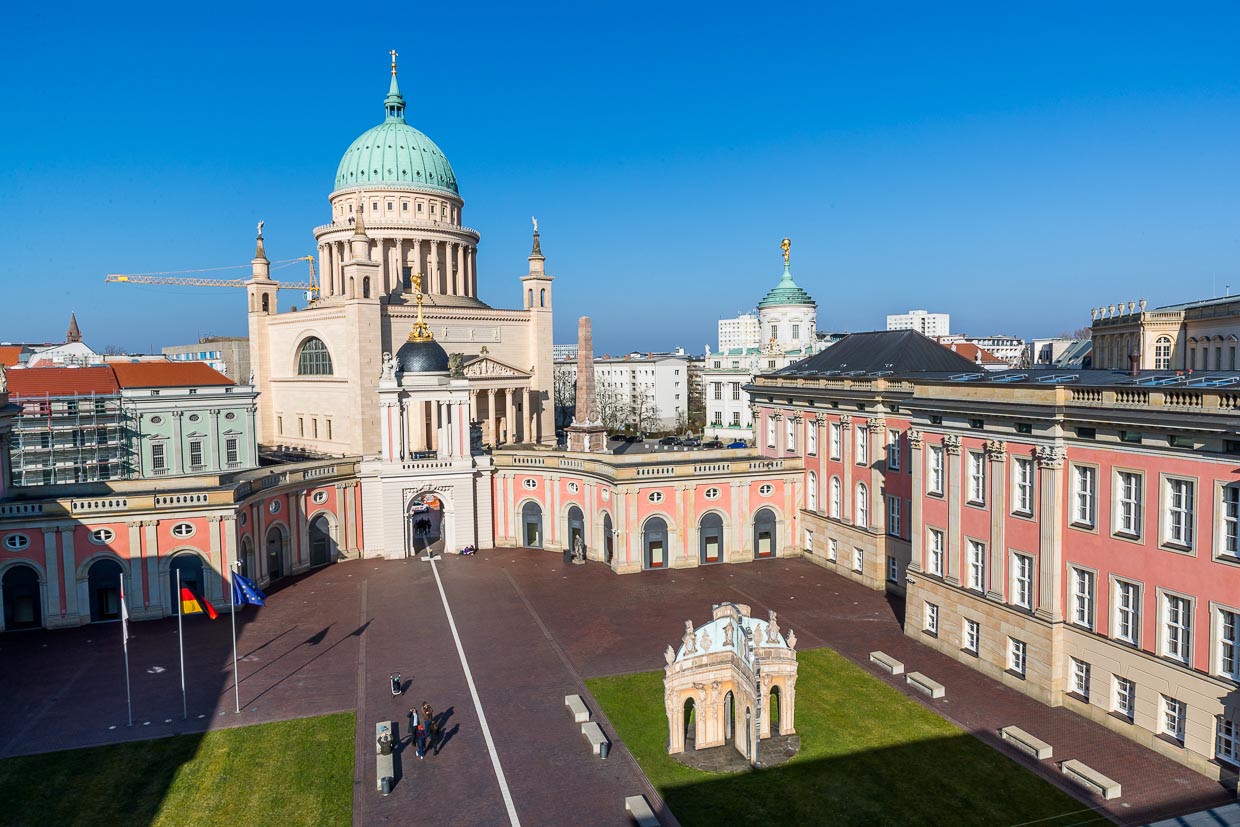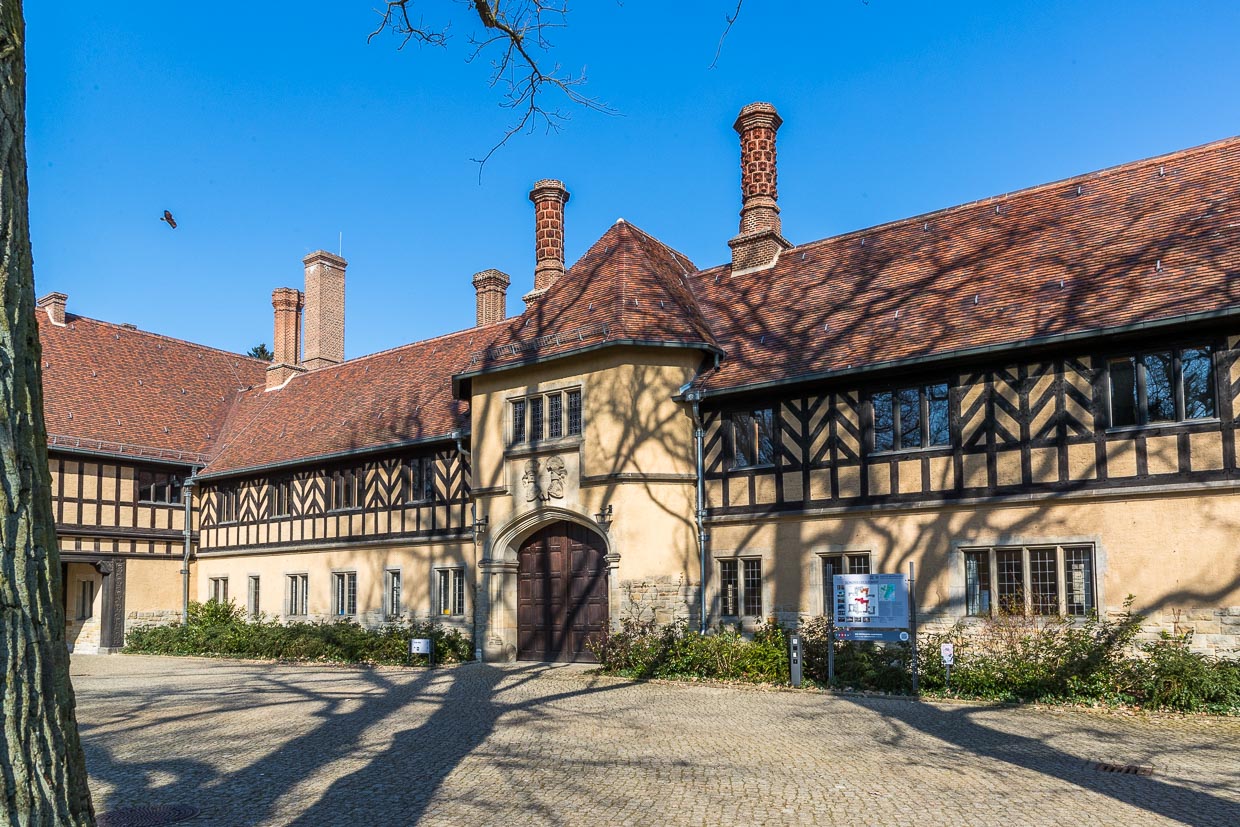A castle is characterized by its imposing size. A castle often served as a noble residence and a defensive structure. Windsor Castle is the oldest castle in the world that has been continuously inhabited to this day. Neuschwanstein Castle in Bavaria is probably the most famous castle in the world, thanks to Disney, as it was the model for Sleeping Beauty Castle in the animated film of the same name. Potsdam near Berlin is a real palace paradise. Frederick II, popularly known as Old Fritz, transformed Potsdam into a residential city from 1740. Numerous prestigious buildings and gardens were created during his 46-year reign. Today, the palace and park complexes of Sanssouci, the New Garden, Babelsberg Park and Sacrow Park form Potsdam’s cultural landscape and together are Germany’s largest UNESCO World Heritage Site.

A little palace lore
Not quite as many years as Sleeping Beauty slept, but for quite a long time, I believed that Sanssouci Palace was the most important of all the palaces in Potsdam. But that was a mistake. There is a palace in Potsdam that has gone down in world history, a palace that could be called the German Versailles and there is even a palace that is not a palace at all. Compared to other palaces, Sanssouci Palace with its few luxurious apartments is more of a noble dacha. Nevertheless, this palace was the preferred retreat of Frederick II, where he spent the summer months. The New Palace, where later generations of Hohenzollerns lived, had not yet been built at this time. But first things first.

Baroque splendor at the Old Market
Behind the seemingly historic walls of the old Potsdam City Palace, where Frederick II spent the winter months, today lies the ultra-modern building of the Brandenburg State Parliament. The original palace was badly damaged during the war and demolished during the GDR era. In order to restore the appearance of the historic center of Potsdam, it was decided to build a new building in the old style. The baroque three-storey façade conceals a five-storey administration and parliament building. A tip for a tour of the city: the cafeteria on the 5th floor is open to everyone and from the terrace you have a good view of the inner courtyard and the large dome of St. Nikolai Church on the Alter Markt.

Alluding to René Magritte’s oil painting of a pipe with the negative caption “Ceci n’est pas une pipe”, the façade of the Brandenburg State Parliament reads “Ceci n’est pas un chateaux” in French and, like Magritte, points to the unreliability of perception.

The New Palace
The New Palace in Potsdam is the palace on the west side of Park Sanssouci. Construction began in 1763 under Frederick the Great and was completed in 1769. It is considered to be the last important baroque palace in Prussia and one of the main works of the Friderician Rococo style. Frederick did not plan the palace as a royal residence, but as accommodation for guests of his court. Over 100 years later, Kaiser Wilhelm II chose the Neues Palais as his main residence from 1888 to 1918. Due to its impressive size and the importance of its art collections, the New Palace could also be described as the Versailles of Germany.

Potsdam Conference at Cecilienhof Palace
The last palace built by the Hohenzollerns is Cecilienhof Palace. As is customary in royal houses, each prince needed his own palace. Crown Prince Wilhelm and his wife Cecilie, for example, were provided with accommodation befitting their status at Cecilienhof Palace. Kaiser Wilhelm II had the building complex built between 1913 and 1917 in the English Tudor style. Compared to its baroque predecessors, the house looks downright cozy. However, the many chimneys on the roofs suggest a luxurious and comfortable interior. Similar to the Potsdam City Palace, Magritte’s “unreliability of perception” applies to Cecilienhof. After all, who would suspect that the brick and timber façade conceals a total of 176 rooms? Until 1945, Cecilienhof was the residence of the last German crown prince and princess, Wilhelm and Cecilie of Prussia.

However, Cecilienhof Palace has gone down in world history not as the last Hohenzollern residence, but as the site that marked the end of the Second World War. From July 17 to August 2, 1945, the summit meeting of the victorious powers took place here, attended by the so-called Big Three: the American President Harry S. Truman, the British Prime Minister Winston Churchill and the Soviet head of state Joseph Stalin. The Potsdam Conference is one of the most important historical events of the 20th century. It not only marked the end of the Second World War, but also the beginning of the Cold War. The Potsdam Agreement, which was adopted at Cecilienhof Palace, laid the foundations for a reorganization of Germany, Europe and the world after the Second World War. From 1961 to 1989, the Wall and other GDR border fortifications ran directly behind the palace garden. During the GDR era, the palace was used as a hotel and for representative purposes. A deceptive idyll was created by cleverly planting greenery in front of the wall.
From November 2024, Cecilienhof Palace will be closed for an extended period. The entrance area and previously unused rooms are to be renovated for use as a hotel. Guided tours are currently being offered to provide information about the renovation.

Like looking through a keyhole
Part of the art of good urban planning is to create visual axes at the end of which the viewer is presented with something impressive. We know this from the large boulevards of European cities. In the 19th century, parts of Sanssouci’s parks were freed from their strict Baroque order. What has been preserved to this day are numerous surprising lines of sight, which are often directed towards a palace in Potsdam’s cultural landscape. Peter Joseph Lenné is responsible for many of these guided views. He is considered the most important garden architect of the 19th century and worked for three successive Prussian regents before being knocked off his pedestal by his eternal rival, Prince von Pückler-Muskau . To this day, our gaze is guided, just as Lenné had once planned. To this end, trees are still pruned today to provide a keyhole view of the Marble Palace from the shores of the Holy Lake, for example.

Potsdam is not only known for its palaces and parks, but also as the German capital of film. In 1911, shortly before the construction of the Hohenzollerns’ last palace began, an old factory hall for artificial flowers became the location for the first film in Potsdam-Babelsberg. The monarchy abdicated in 1918, but there are still screen queens in the dream factory of Potsdam-Babelsberg today.
The research was supported by PMSG Potsdam Marketing und Service GmbH

